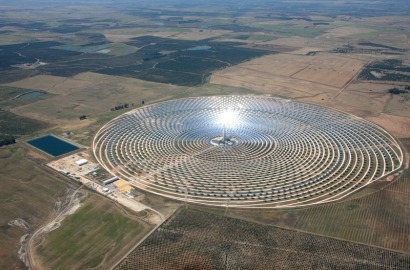
Current concentrating solar power (CSP) plants utilize oil, salt, or steam to transfer solar energy to the power block; however, these fluids have properties that limit plant performance. Synthetic oils, often used in parabolic trough technology, have an upper limit of 400°C, whereas salt is limited to 560°C.
Although direct steam generation is being seen as a possible alternative, experts argue that this requires complex control systems to maintain optimum operational pressures and also offers a relatively limited storage capacity when compared to oil and salt. To obviate these limitations Ma examined the possibility of deploying supercritical-CO2 plant configurations in CSP, which could allow for higher operating temperatures and translate into higher thermal cycle efficiencies and more efficient thermal energy storage in plants.
Ma explained that “supercritical-CO2 is operated in a closed-loop recompression brayton cycle and offers higher cycle efficiencies than supercritical or superheated steam cycles at temperatures relevant for CSP applications”. He said that “supercritical-CO2 has the ability to be both the heat transfer fluid for the solar collector and the working fluid for the power block, which will also simplify and reduce the installation, maintenance and operational cost of the system”. Furthermore, the Supercritical CO2 “power unit is more compact and is a tenth of the size of a steam cycle power block”, which will also result in lowered cost when fully developed.
Zhiwen Ma will present his innovative paper focusing on Supercritical-CO2 at the 2nd CSP Plant Optimization Summit in San Francisco on 7-8 September. His presentation will address:
- The advantages and development potential of S-CO2 examining its scalability and power range suitability for CSP
- How S-CO2 could achieve higher efficiency at lower temperatures than steam Rankin and Helium cycles for better performance in CSP plants
- Analyze real data to show how integrating S-CO2 inside CSP receivers will improve overall plant efficiencies
Editor's note: This article was kindly provided by CSP Today. To see the interview with Zhiwen Ma in full visit the CSP Plant Optimization USA conference website.
For additional information:

